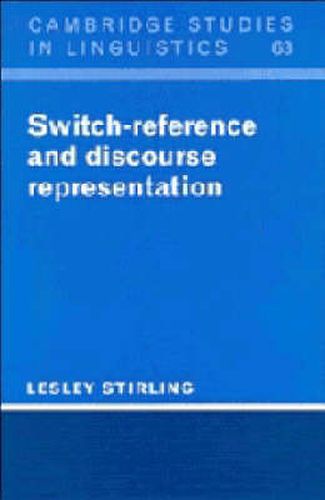Readings Newsletter
Become a Readings Member to make your shopping experience even easier.
Sign in or sign up for free!
You’re not far away from qualifying for FREE standard shipping within Australia
You’ve qualified for FREE standard shipping within Australia
The cart is loading…






In central cases of switch-reference, a marker on the verb of one clause is used to indicate whether its subject has the same or different reference from the subject of an adjacent, syntactically-related clause. In central cases of logophoricity, a special pronoun form is used within a reported speech context to indicate coherence with the source of reported speech. Lesley Stirling argues that these types of anaphoric linkage across clause boundaries cannot be adequately accounted for by Binding Theory. Her detailed examination of the two phenomena, including a case study of the Papuan language Amele, proposes an account for them which is formalized in Discourse Representation Theory, and explores how far it is possible for such an account to be compositional morpho-syntactic/semantic, while at the same time taking seriously the range of linguistic and cross-linguistic data to be explained.
$9.00 standard shipping within Australia
FREE standard shipping within Australia for orders over $100.00
Express & International shipping calculated at checkout
In central cases of switch-reference, a marker on the verb of one clause is used to indicate whether its subject has the same or different reference from the subject of an adjacent, syntactically-related clause. In central cases of logophoricity, a special pronoun form is used within a reported speech context to indicate coherence with the source of reported speech. Lesley Stirling argues that these types of anaphoric linkage across clause boundaries cannot be adequately accounted for by Binding Theory. Her detailed examination of the two phenomena, including a case study of the Papuan language Amele, proposes an account for them which is formalized in Discourse Representation Theory, and explores how far it is possible for such an account to be compositional morpho-syntactic/semantic, while at the same time taking seriously the range of linguistic and cross-linguistic data to be explained.